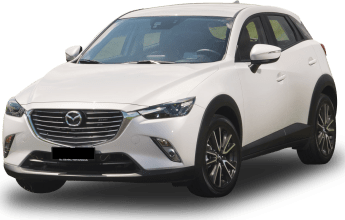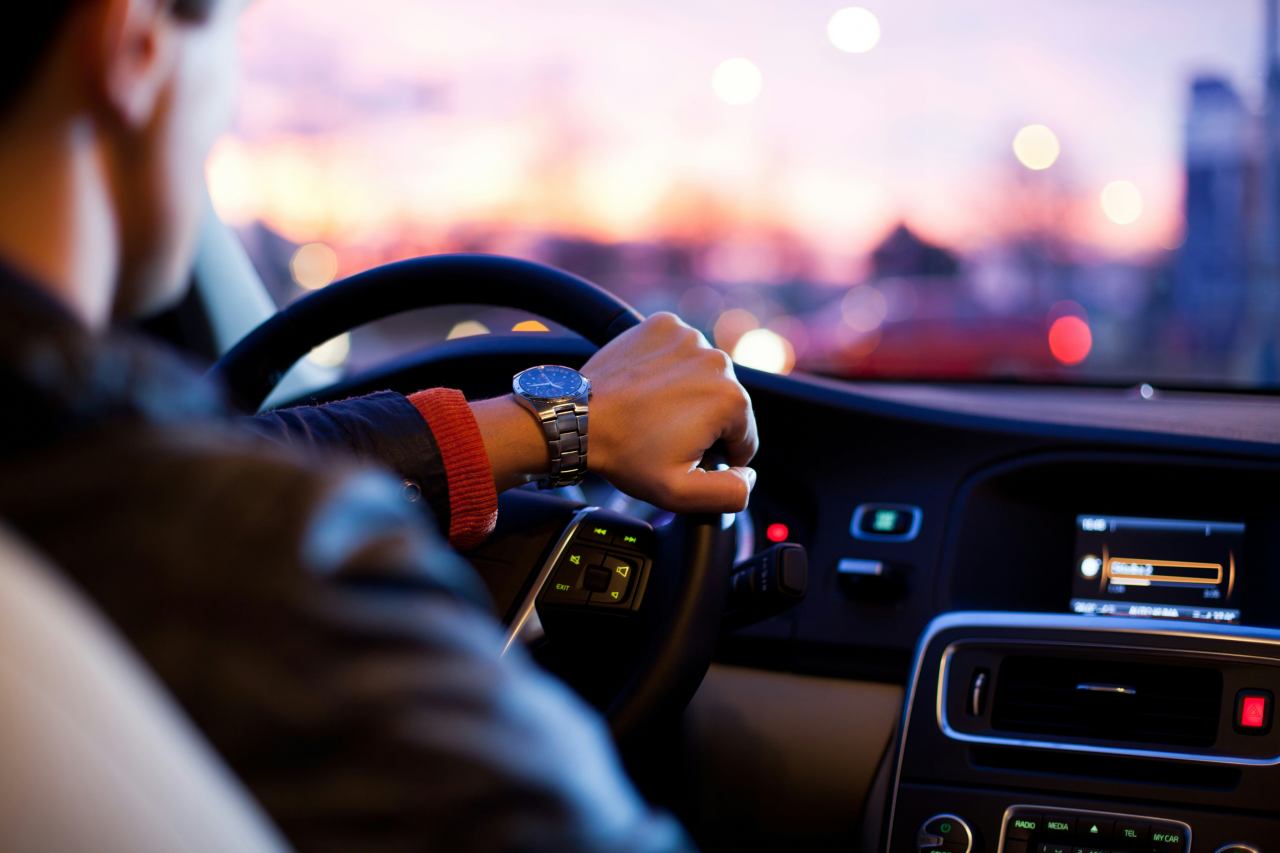For a tiny SUV, the Mazda CX-3 is big on numbers.
It’s one of the few SUVs starting from under $25,000. It’s the second most-popular SUV when you combine both the Light (where it leads) and Small SUV segments. And it is currently the fifth-oldest car-based crossover on sale in Australia, after the Mitsubishi ASX, Mitsubishi Outlander, Nissan X-Trail and Nissan Qashqai.
Visually, the CX-3 has barely changed since launching locally in January, 2015, but to its maker’s credit, a raft of engine, suspension, safety, equipment and noise-reduction improvements have been steadily added, especially from the Series II update from August 2018.
Thus, more than six years on, the tiniest Mazda SUV continues to lure Australians in massive numbers. Plus, in late 2019, our cars returned to being supplied from Japan, after nearly five years of it coming out of Thailand. Both are reasons enough for us to revisit the evergreen DK series.
Here we take a long, hard look at the cheapest CX-3 grade available, the Neo Sport.
Mazda CX-3 2021: NEO Sport (fwd)
| Engine Type | Inline 4, 2.0L |
|---|---|
| Fuel Type | Unleaded Petrol |
| Fuel Efficiency | 6.6L/100km (combined) |
| Seating | 5 |
| Safety Rating |
|
Does it represent good value for the price? What features does it come with?
The CX-3 Neo Sport front-drive auto starts from $24,890 before on-road costs (ORC) or $26,990 driveaway – or $2000 less if the excellent six-speed manual version is preferred.
When launched back in 2015, the base Neo auto equivalent barely cost any less ($23,700 in today’s money, adjusted for inflation), yet includes heaps more features, like Autonomous Emergency Braking (AEB), reverse camera, 7.0-inch centre touchscreen with Apple Car Play/Android Auto connectivity as part of Mazda’s MZD Connect multimedia system, centre console bin/armrest, electric park brake with hill-hold function, electric folding mirrors and digital radio, among other items.
.jpg)
This is on top of six airbags, engine stop/start, rear parking sensors, cruise control, air-conditioning, Bluetooth phone and audio streaming capability, internet radio integration, steering wheel-mounted audio controls and two USB ports. Steel wheels ride on 215/60R16 tyres, with a space-saver spare wheel.
.jpg)
Key auto-equipped rivals are the Kia Stonic S at $21,490 plus ORC/$22,990 driveaway and Hyundai Venue from $22,710 plus ORC/circa-$26,200 driveaway.
The bad news for the competition is that the CX-3 is powered by a powerful 110kW/195Nm 2.0-litre engine while the Stonic and Venue are lumbered with a 74kW/133Nm 1.4-litre and 90kW/151Nm 1.6-litre four-pot atmo units respectively – and both without stop/start tech. All drive the front wheels only, via six-speed torque-converter automatic transmissions.
Key spec differences? The Stonic misses out on a digital radio, auto high beams and middle console bin with armrest, but returns fire with a two-year longer warranty (at seven years) and wireless for the Apple CarPlay/Android Auto tech (base grade only though, weirdly). The latter is also standard in the Venue, as are alloys (albeit tiny 15-inch hoops) and console bin, but also loses the digital radio.
.jpg)
We’d put it as a win for the Mazda, when all things considered.
Mazda charges $495 extra for Machine Grey, Polymer Grey and Soul Red Crystal metallic paint, leaving the Deep Crystal Blue, Eternal Blue, Jet Black and Snowflake White micas, as well as Ceramic Metallic, as no-cost colour choices.
Remember when the company used to crow on about never charging for premium paint?
Is there anything interesting about its design?
Back at the LA Auto show in November, 2014, there were audible gasps when Mazda ripped the covers off the CX-3. Back then, truly small, supermini-based SUVs were ungainly (hello, Ford EcoSport), impractically packaged (Nissan Juke) or proper 4x4s mountain goats like the Suzuki Sierra/Jimny.
What we’re saying is that appealing, striking design is at the centre of the Mazda’s lingering popularity. And while familiarity and time have eroded the crossover’s visual freshness, it still oozes character and attitude.
.jpg)
The CX-3 shares the same 2570mm wheelbase with the Mazda2, and at 155mm it is just 3mm higher off the ground, yet manages to be 40mm taller, 210mm longer and 70mm wider overall.

How practical is the space inside?
The CX-3 is a truly compact crossover, and very literally a Mazda2 on stilts. Sharing around 70 per cent of parts, both have an almost identical footprint.
The world of difference separating the two lies in the fact that it’s taller so no hassle at all to get in and out of, with loftier seating that also makes it easier to see out of.
.jpg)
Once ensconced on firm but supportive front seats, the CX-3’s smallness is palpable, but it isn’t cramped, even for this tester’s 200cm-tall partner up front. That has to do with the wide range of seat height and slide adjustability, range of tilt and telescopic steering movement and a decent level of available space. Result? The driving position is excellent.
.jpg)
The dash architecture is also shared with the Mazda2, down to the oddly deco-style central speedo flanked by the world’s tiniest tacho to the left and a trip computer/fuel-gauge info to the right. The controls have a quality, well-oiled feel to them, the stylised turbine air vents are reminiscent of the old-shape Audi A1's (no bad thing) and 2018's upgraded centre console – with its fixed armrest, plentiful storage and twin USB-A, 12-volt and SD card outlets – vies with the push-button start, sporty little gear lever, power folding mirrors and bottle-gobbling door bins for surprise-and-delight bonus points. Thought has really gone into this interior.
.jpg)
As mentioned earlier, over the years, the Neo grade has accumulated extra equipment, to the point where the ‘Sport’ suffix more-or-less aligns with the earliest versions of the mid-level Maxx. This means that the latter’s central screen has been standardised since the Series II update, allowing for a camera and associated multimedia goodies like the digital radio, as well as the inclusion of a BMW iDrive-style controller for the MZD Connect system – a quality touch not expected at this price point. And while the attractive three-spoke wheel remains free of leather-like sheathing, the entire presentation is still an appealing, minimalist monochromatic charcoal that’s quite nicely served up.
.jpg)
And guess what? The CX-3’s rear still holds up today. Entry/egress is unexpectedly easy due to doors that open almost 80 degrees; the seats are a little short in length for longer thighs but well-padded, nicely angled and promote a natural posture, so are comfy; and there are overhead grab handles with coat hooks, a single map pocket and a small bottle receptacle. Your 178cm tester can sit behind themselves with lots of shoe room and enough knee and head clearance too.
However, squeezing three adults out back would be a desperate move; the ambience is funeral-black attire; the rear windows don’t go all the way down despite their shallowness; and there isn’t enough storage nor electricity access for today’s connected travellers, zero beverage holders and nil reading lamps. On the other hand, it’s all beautifully put together.
.jpg)
Note that while the 60/40 backrest splits and fold individually, they do not recline as in some other SUVs, while the base is fixed, so doesn't slide to increase rear-seat legroom or luggage capacity.
Further back, the boot is as you’d expect – deep and wide but fairly short due to the stubby rear. The loading lip is a little high, but there’s a very useable amount of space, with a space-saver spare wheel living beneath the floor. Speaking of which, there are two of those – one that offers extra protection from prying eyes.
Cargo capacity is rated at a fairly meagre 264 litres, or 1174L with the 60/40 rear backrests folded. The thing is, it looks larger and more practical than what the volume numbers suggest.
Other disappointments might include poor side and rear vision, but at least a camera and big exterior mirrors go some way in addressing this shortcoming; otherwise the CX-3’s cabin has weathered the years almost as well as the sporty dynamics. Particularly at its price point.
What are the key stats for the engine and transmission?
At between 1266kg (manual) and 1297kg (auto), the Neo Sport isn’t that light for a light SUV, but it is the least heaviest vehicle Mazda builds that uses its ubiquitous, near-decade-old 2.0-litre four-cylinder petrol engine.
Dubbed SkyActiv-G, this 1998cc double overhead cam direct-injection unit delivers a healthy 110kW of power at 6000rpm and 195Nm of torque at 2800rpm to the front wheels, courtesy of a six-speed torque-converter automatic transmission. Thus, the power-to-weight ratio here is a very competitive 90.5kW per tonne.
.jpg)
In Neo Sport guise, the auto features a tip-shift function that allows drivers to manually select one of the six ratios on offer. The gearbox changes up automatically once the engine approaches the red line, unless the traction and stability controls are turned off... in which case, it bounces off the rev limiter. What a sports car!
There is also a Sport mode that holds on to each ratio for longer, which is in keeping with the engine’s high-rev power delivery.
How much fuel does it consume?
With just 800km, our Neo Sport was box-fresh and barely run-in, but nearly doubling that tally saw the CX-3 return a commendable 7.1 litres per 100km at the pump, in a mixture of urban, suburban, freeway and country-road driving. The latter also included performance testing. No doubt the standard stop/start system helps out somewhat here.
Mazda, meanwhile, claims a combined average of 6.3L/100km, for a carbon dioxide emissions average of 143 grams/km. Urban and Extra Urban figures are published as 7.7L/100km and 5.5L/100km respectively, so our tight little CX-3 is close to delivering on its fuel-economy promise in the real world.
Note, it requires just 91 RON unleaded petrol, though 94 RON E10 ethanol petrol can also be used – and that’s often the cheapest.
Fitted with a 48-litre tank, some 760km between refills is possible.
Warranty & Safety Rating
What safety equipment is fitted? What safety rating?
Not surprisingly, the CX-3 was tested all the way back in 2015, and so the MY21 version’s five-star ANCAP safety rating was conducted under significantly less-stringent guidelines compared to what new vehicles must meet nowadays.
Standard safety fare for the Neo Sport includes AEB, six airbags (dual front, side and curtain for all outboard occupants), anti-lock brakes with brake assist and brake-force distribution, traction and stability control, reverse camera, rear sensors, tyre-pressure warning and two rear-seat ISOFIX points as well as three top tethers for straps. This is all run-of-the-mill stuff for today's base modern crossover.
For the full suite of driver-assist safety – such as driver-fatigue monitor, blind-spot alert, lane-departure and lane-keep assist, front/rear crossing braking, traffic-sign recognition tech, adaptive cruise control with stop/go and auto high-beam control – you’ll need to hit the higher grades like Akari (starting from $34,190 before ORC).
Mazda’s umbrella AEB system works in different ways according to prevailing circumstances and conditions.
Its Smart City Brake System [Forward] set-up works between about 4km/h and 80km/h, applying the brakes as required. Smart City Brake System [Reverse] does the same thing when reversing at speeds between 2km/h and 8km/h. In both cases, it also features an Acceleration Control function that stops the car lurching forward or back if – at under 10km/h – the car sensors that the throttle rather than the brake pedal is pressed, cutting power from the engine.
Meanwhile, Smart Brake Support works at higher speeds 15km/h to 145km/h) to help reduce or eliminate a collision by applying the brakes as required.
What does it cost to own? What warranty is offered?
Mazda offers a five-year/unlimited kilometre warranty plus roadside assistance on all CX-3s, as well as capped-price servicing, scheduled at every 12-month or 10,000km intervals.
The servicing prices for the Neo Sport vary between $330 and $390 annually over the first five years, while perishables like cabin air filter ($97 after 40,000km) and brake fluid ($71 after 40,000km/two years) are also listed online.
What's it like to drive around town?
Ever since the days of the Holden LC Torana 6s, Australians love big engines in smaller cars. Case in point: CX-3. A large 110kW/195Nm 2.0-litre engine powering a city-sized crossover equals instant and accessible oomph.
Around town, this translates into healthy off-the-line acceleration and immediate response for darting in and out of traffic. In this context, the Mazda absolutely shines, providing punchy performance, and without the lag that rivals with turbos and/or dual-clutch transmissions suffer from.
It’s not the quietest engine on offer, however, with a loud and lusty exhaust note that is in keeping with the Japanese crossover’s sporty nature. Like most modern Mazdas, this revs noisily for the first few seconds after a cold start. Factor this in if you live in a crowded area.
Out on the open road, the CX-3 comes out into its own among cheaper small SUVs, thanks to the 2.0-litre engine’s deep lungs, meaning that the amount of power on offer is available from low revs all the way up to the tachometer’s red line. As speeds rise, there’s still plenty of muscle left, and the car will flex them strongly well beyond the legal limits. As such, the Mazda has a decisive advantage for buyers who also do a lot of long-distance touring out on the open road.
In fact, if there’s one thing that defines the CX-3’s driving experience, it’s the natty little toggle switch beside the gear lever labelled ‘Sport’. Along with the auto lever’s tip-shift with the correct pull-for-upshift/push-for-downshift action, it speaks of the fizzy, fevered engine character that can only have been created by a company with an engineering focus.
Light yet decisive steering further underlines the Mazda’s broad consumer appeal, in that it is a breeze for those seeking an undemanding commuter that’s easy to park and a cinch to slot into tight traffic spots, yet can also provide something for driving enthusiasts to really sink their teeth into. Even with utterly conventional MacPherson strut front and torsion beam rear suspension, riding on a lowly 16-inch steel wheel/tyre package, the Neo Sport feels fast and lively through corners, with pin-point accuracy and reassuring control, backed up by strong, well-modulated brakes. Plus, its gravel-road behaviour is exemplary.
.jpg)
On the other hand, some rack rattle is evident from the steering column through bumpier turns – though the CX-3 still tracks true.
Until comparatively recently, Mazdas were infamous for way too much road and tyre noise entering through to the cabin. The CX-3 was as guilty as most, but since the Series II update, a concerted effort to quell this has succeeding in quietening things down noticeably.
The company has also managed to take the edge off the suspension’s firmness, so it isn’t quite as abrupt over urban bumps like it was before. In fact, we'd go as far as saying that the ride is on the firm side of comfy. Our car’s Dunlop Enasave 215/60R16 tyres seem well-suited to our urban road conditions.
Yes, the CX-3 is getting on, but it is clear that Mazda’s persistence in improving the product and responding to criticism over time has paid off handsomely. The Neo Sport is far from finished as both an urban commuter and a comfortable highway tourer. Impressive.
Verdict
Confession time. The prospect of having to revisit the CX-3 again seemed pointless and even boring, after six years of regular testing and retesting and 12 months of driving fresher and more exciting rivals, from the Kia Stonic to the fabulous Ford Puma.
But the old stager really demonstrates the power of persistent improvement, gaining many of the learnings from newer models within the Mazda range, whilst building on the core strengths that made this 2015 debutante the sportiest small SUV in the world at the time.
The fact is, the CX-3 still outshines most rivals for performance, efficiency and handling, while providing a comfortable, quality cabin experience. Yes, it’s compact, but that is obvious from the moment you see it in the flesh. If you’re happy with the small-ish (but well packaged) boot and don’t need a heap of back-seat space, then you’re likely to be pleasantly surprised by how thoroughly well-engineered the Neo Sport is, even at such a late stage in its lifecycle.
And, given the latter’s high spec level and comparatively low price, it is a bit of a bargain. Little wonder it sells in big numbers. As Mazda attempts to march upmarket, such a low entry figure cannot be sustained for too much longer. Enjoy.
Pricing Guides




.jpg)

.jpg)
.jpg)
.jpg)
.jpg)

.jpg)

_C01_png.jpg)


.jpg)

.jpg)
.jpg)




.jpg)
Comments